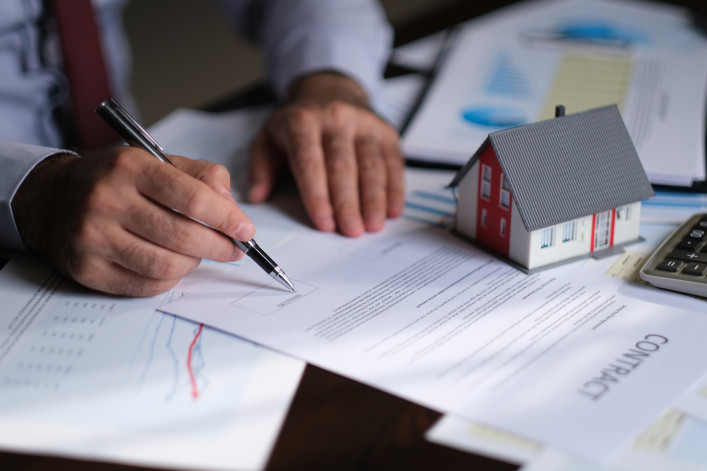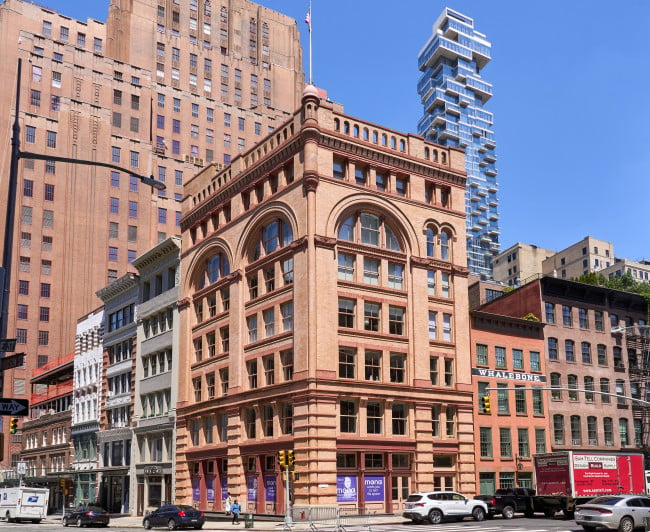Should I ask the seller to buy down my mortgage rate?
- Occasionally, motivated sellers will offer a buyer a closing credit during the purchase of their apartment
- That closing credit can then be used to temporarily lower the purchaser’s monthly mortgage payment
- Negotiating a closing credit for a buydown usually depends on how badly a seller wants to offload their property

Sellers will be more likely to give you a closing credit for a rate buydown if they want to offload a property that has taken a long time to sell.
iStock
I’m considering buying an apartment with a mortgage. I’ve heard that you can buy down your mortgage rate with funds from the seller at closing. What are the benefits and risks of buying down my rate right now?
Buying down your mortgage rate is a way to lower your monthly mortgage payment if you have some extra cash at closing, and sometimes a seller will cover a rate buy down through a closing credit, according to our experts. But there’s a lot to consider when evaluating if this tactic is the right move for you.
Here’s what actually happens when you buy down your mortgage rate: When you use a loan to purchase an apartment, you can buy mortgage points—also known as “buying down the rate.” Through an up-front cash payment, you can lower your interest rate on subsequent mortgage payments.
Both temporary and permanent rate buydowns paid for by sellers are fairly rare in New York City because it’s such a competitive market, says Debra Shultz, vice president of lending at mortgage lender CrossCountry Mortgage.
“With limited inventory, [NYC] is an ultra-competitive market. Making an offer that includes a temporary rate buydown paid for by the seller is usually not seen as a competitive offer,” Shultz says, noting that “[it’s] possible for a property that’s been on the market for a while and not moving.”
Mat Gundell, a real estate salesperson at Compass, says he’s done about five deals in the past six months where he’s negotiated a closing credit which a purchaser can then use for a rate buydown in new developments in NYC thanks to the higher interest rate environment. (The U.S. Federal Reserve has raised interest rates in 2022 to curb inflation, though it has signaled that it plans to begin cutting rates this summer).
“I’ve been doing this for 12 years and I haven’t used this as a negotiation tactic before,” Gundell says. “When rates were around 3 percent, no one was complaining about rates. They were out bidding on properties.”
Where sellers and closing credits come in
Sellers offer a closing credit—essentially a discount—to buyers when they want to incentivize a deal without having to drop their actual price. (This can wind up deceiving the next buyer, who will only see the higher recorded price).
Using a closing credit to buy down a purchaser’s interest rate is still fairly rare, but it demonstrates how much the high interest rate environment is impacting prospective buyers, Melissa Leifer, a real estate salesperson with brokerage Keller Williams NYC, says.
“The only reason I started doing [buydowns] was because the rates were just so high,” Leifer says.
Gundell says most of the deals where he’s negotiated a closing credit for a rate buydown have been for apartments that have closed for less than $1 million, where buyers more heavily rely on financing.
What kind of buydown can I get?
The most popular buydown gives the purchaser a reduction in their mortgage rate for two years, by 2 percent the first year and 1 percent the second, Shultz says. This is a temporary buydown—your rate will return to the loan rate after that two year period, Shultz adds.
Commonly known as a 2 to 1 buydown, that arrangement usually costs the seller around 2.25 percent of the loan amount at closing, says Gundell and Brian Cohen, a mortgage lender with Guaranteed Rate Affinity.
It’s possible to arrange a buydown for three years, though that significantly increases the closing credit a seller would need to pay, Shultz says.
What are the benefits and risks?
One major risk of a temporary buydown is what happens after that initial two-year period. You need to make sure you can pay the higher rate once that buydown period ends, Shultz says.
“Buyers must understand that the rate and payment reduction from a rate buydown are temporary,” Shultz says. “They need to be comfortable with the payment at the future rate should the chance to refinance not come prior to the final increase.”
You do have the option of refinancing your loan to score a better rate, but that process usually costs between 2 and 5 percent of the loan amount, according to Bankrate. You need to consider those costs if you plan on relying on a refinance to lower your monthly payments if or when interest rates drop.
A temporary buydown could be a big benefit if the Federal Reserve cuts rates, and you’re able to refinance at a lower rate after paying your cheaper two-year rate. Of course, that all depends on the Federal Reserve living up to economists expectations.
“There are definitely risks involved because we can’t predict what the Fed is going to do,” Gundell says. “The way that they’ve talked about this, it seems pretty certain, but there’s always risk involved.”
A buydown might also not be worth it if you have time to wait for rates to decline before purchasing an apartment. Cohen expected the popularity of rate buydowns to decline as confidence that the Federal Reserve will cut rates grows, though he said they’re still fairly popular right now.
“Rates are on the way down but aren’t done yet, so we're still seeing a lot of buy down offers on new developments,” Cohen says.
Trouble at home? Get your NYC apartment-dweller questions answered by an expert. Send your questions to [email protected].
You Might Also Like



























